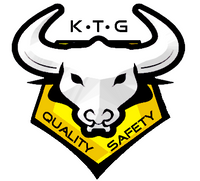If you are at risk for foot injury at your workplace or the place you are going to, it is needless to say that you should wear the appropriate footwear.
Safety footwear is designed to protect feet against a wide variety of injuries. Compression, impact and puncture are the most common type of injuries. There are also less common types such as electric, slipping and corrosion injuries. With so many kinds of potential injuries to guard against, it is needless to say that there are many varieties of safety shoes on the market.
1) Steel Toe & Steel Sole Shoes
As the name suggests, this type of safety shoes come with a steel toe cap and steel sole layer. The steel cap serves to protect the toes against compression (constant pressure) and impact (sudden pressure) forces, for example, a heavy object dropping on the toes. The steel sole will protect the underneath of the feet from piercing injury. An example will be a screw that is sharp and long enough to punch through your shoes to reach your feet.
2) Steel Toe Only Shoes
As some environment runs a less likelihood of piercing injury, it may not be necessary for the safety shoes to have a steel sole. This safety shoes comes with steel toe cap only and the benefit will be a lighter shoes as compared to one with steel sole.
3) Antistatic Shoes

In technical terms and according to EN ISO 20345 standards, the shoes are antistatic if the measured contact resistance is in the range between 100 kiloohm (105 ohm) and 1 gigaohm (109 ohm), which basically means that the shoes are electrically insulating if they are within this range.
The purpose of such shoes is not to prevent the wearer from being electrocuted but rather to prevent electrostatic discharge (ESD). ESD is a the sudden flow of electricity between two electrically charged objects by contact, which can create a visible or non-visible spark that can damage sensitive electronic devices. ESD is especially deadly in environment where gas, fuel vapour or coal dust is present, as it can ignite an explosion.
Antistatic shoes are designed to prevent electrostatic buildup by discharging it at a constant rate.
4) Slip Resistant Shoes

There is a difference in shoes that are oil-resistant and shoes that are suitable for oil surface. The first meant that the shoes material itself is resistant to oil stain while the latter actually allows the wearer to work on surface stained with oil.
The designs for slip resistant shoes sole can vary but they generally feature tight clustered pattern that will guide liquid away from the middle of the sole, enhancing grip on wet or oily surface. As compared to the traditional deep cut soles, these kind of oil surface soles will wear out easily if worn on a normal road surface.
5) Electrician Shoes
While antistatic shoes are designed to prevent electrostatic buildup, electrician shoes are designed to prevent the wearer from being electrocuted. The toe cap for such safety shoes are made of composite material, which are non-metal, rather than the traditional steel. Even though they are not doing work involving electricity, some wearers may wear electrician shoes in environment whereby they have to pass through metal detectors.
The above types of safety shoes are not mutually exclusive and some safety shoes can fall under two or more types. Wearers should access their needs and workplace safety guidelines to decide on which type of safety shoes is the most suitable for them.
Follow us on Facebook (@ktgsafety) or Instagram(@kaithegent_safety_footwear)
for updates on new designs or promotions!
